
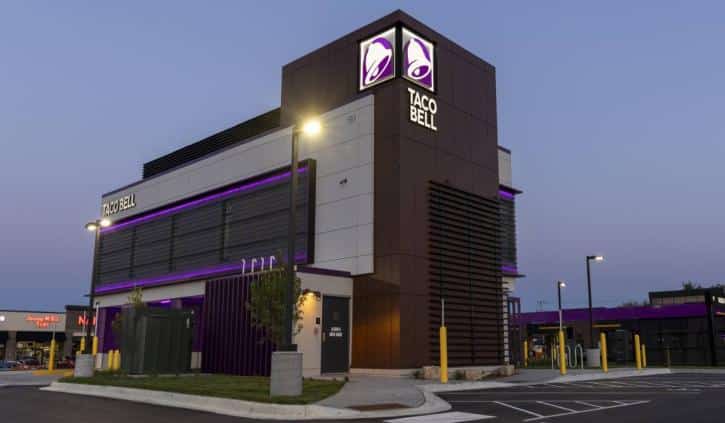

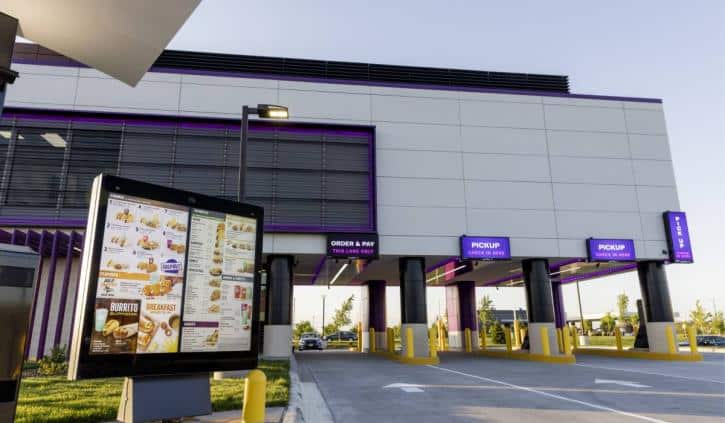
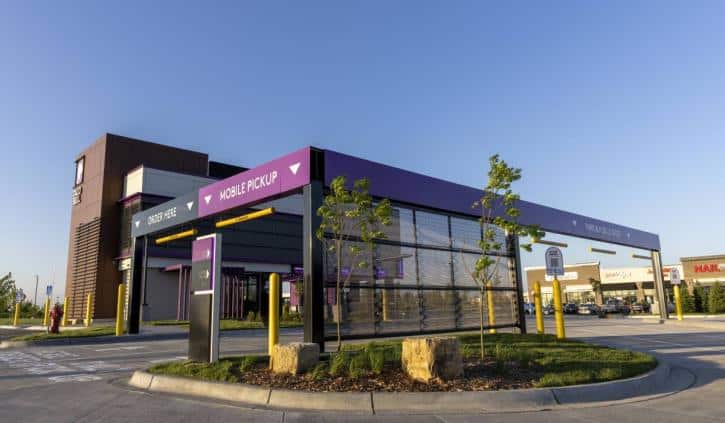
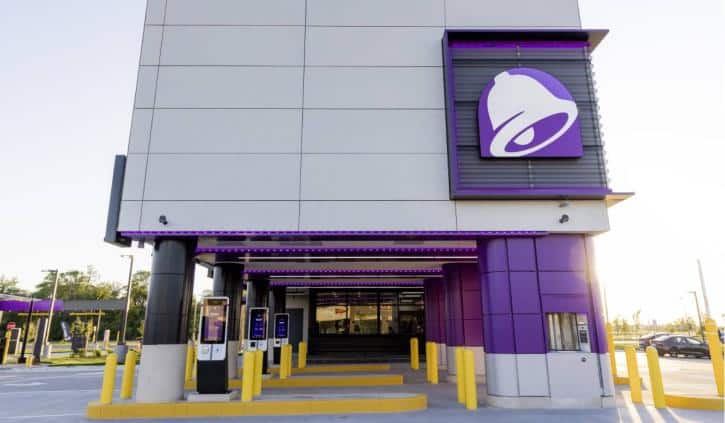



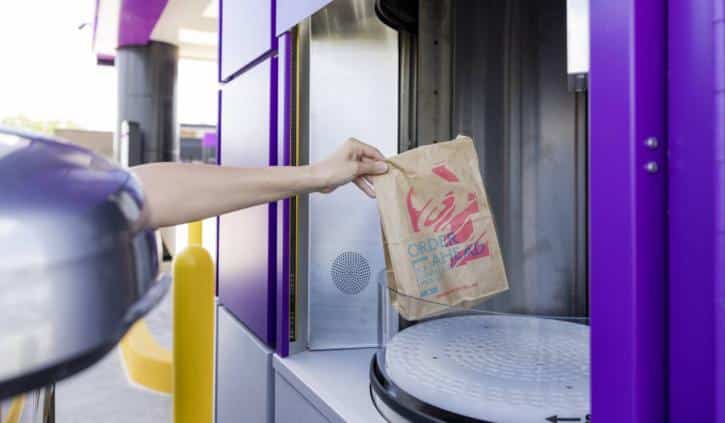


Taco Bell’s innovative prototype—and arguably the most ambitious in the restaurant industry—is scheduled to open in Brooklyn Park, Minnesota, on Tuesday.
Coined Taco Bell Defy, the four-lane drive-thru building was opened in partnership with long-time franchisee Border Foods and manufacturing and construction solution Vertical Works.
READ MORE ON TACO BELL’S DEVELOPMENT:
Taco Bell Unveils its Most Innovative Restaurant Ever
Taco Bell Unveils Fully Digital Location in Times Square
Taco Bell Fuels Pipeline with Multiple ‘Restaurant of the Future’ Designs
Note: If viewing on desktop, please click the arrow in the picture to see the next slide.
Taco Bell Defy falls under the chain’s Go Mobile category of restaurants, which launched in August 2020. These particular stores feature dual drive-thrus with a dedicated mobile pickup lane, smart kitchen technology, mobile pickup shelves, self-ordering kiosks, and a concierge service of employees in the parking lot.
“Taco Bell Defy is an incredible innovation for our brand, and one that’s meeting our consumer in a really unique way. For decades we’ve been committed to providing a fast, safe and friendly drive-thru experience; now with our bold goal of creating a two minute or less drive-thru experience for customers of this concept, Taco Bell Defy is the future,” Mike Grams, Taco Bell president and global COO, said in a statement.
“We’re thankful for our incredible 36-year partnership with Border Foods and feel like Taco Bell Defy is a culmination of years of success between our teams, along with the expertise of local partners like Vertical Works who helped make this possible,” he continued.
The prototype boasts four drive-thru lanes. Three are specifically for mobile orders and third-party delivery pickup, while the fourth is a traditional lane with a speaker box and menu board.
Taco Bell is hoping to reduce drive-thru service times by two minutes or less with its new prototype. Systemwide, the fast-food chain has turned in nine straight quarters of average drive-thru times under 4 minutes.
Taco Bell’s digital channels crossed $1 billion in 2020. The chain’s rewards program debuted in July 2020, and by the one-year anniversary, app sales increased 90 percent and sign-ups for the program grew 5x more than the first month.
By the end of 2021, digital channels mixed 40 percent internationally and close to 20 percent in the U.S.
Taco Bell franchisee Border Foods has been a part of the company for more than 35 years. The Defy prototype is the operator’s 230th restaurant and 82nd new build.
“Taco Bell Defy embodies the innovative, entrepreneurial spirit of Minnesota businesses and franchisees,” Lee Engler, co-founder and CEO of Border Foods, said in a statement. “It is a creative, technological solution for a faster, contactless experience for as many Taco Bell fans as possible and is poised to be the future of quick-service dining.”
During the ordering process, two-way audio and video technology enables customers to interact with employees located on the second story.
Taco Bell Defy has several features that could be a part of future restaurants in the U.S. In the meantime, the brand is considering teaming up with Border Foods to complete retrofits of neighboring stores.
For each of the three mobile order drive-thru lanes, there’s a digital check-in kiosk where customers/delivery drivers scan a QR code so Taco Bell can identify the order and prepare it for pickup.
After customers complete their order in the drive-thru, a Taco Bell employee places the meal in a proprietary vertical lift system that transports the order to guests.
The above photo depicts a customer receiving their meal from the proprietary vertical lift system.
“We applied our innovative approach to problem solving to create a brand new way for consumers to access fast food,” Josh Hanson, co-founder of Vertical Works and CEO and founder of WORKSHOP, said in a statement. “We know today’s consumer expects a convenient and memorable experience, and the Taco Bell Defy concept delivers on both.”
In addition to drive-thru, customers are also able to park, walk inside, and grab their mobile order from a pickup shelf. They can order at the counter, as well.
Consumers are also able to walk inside and order from a digital kiosk, meaning there’s nearly a half-dozen ways for someone to pick up their food.





